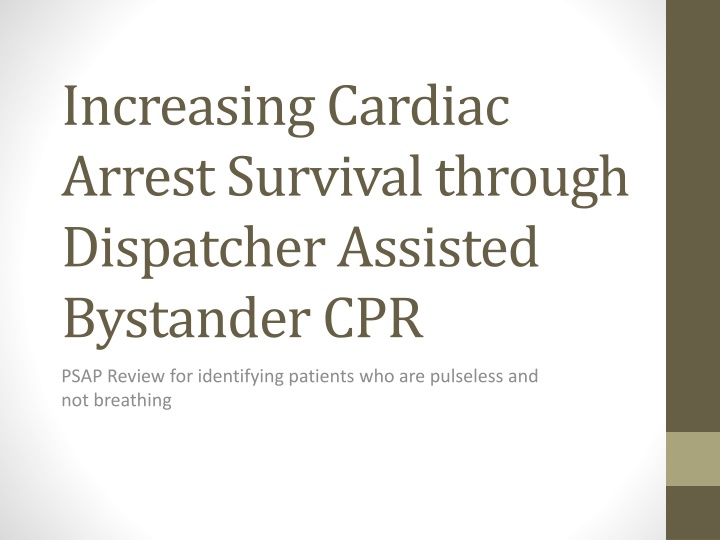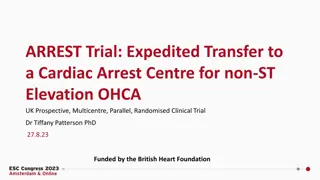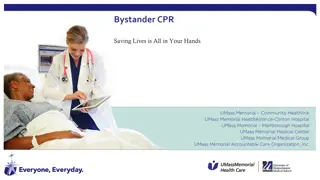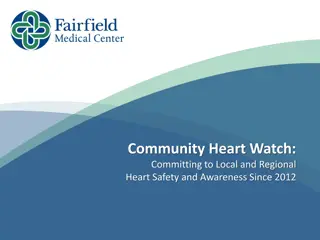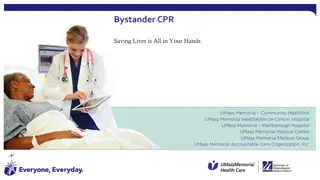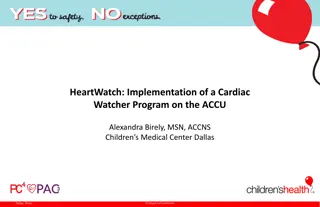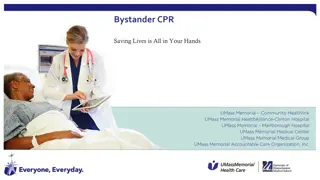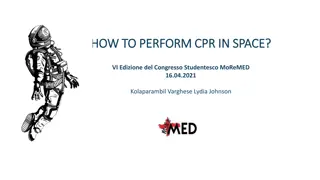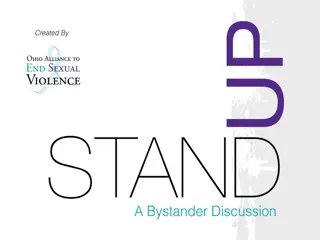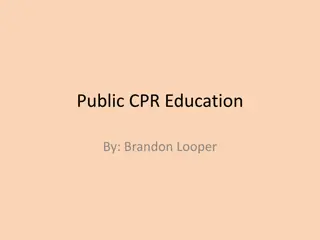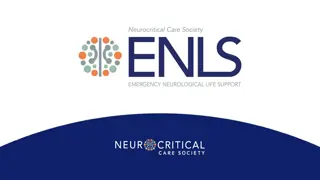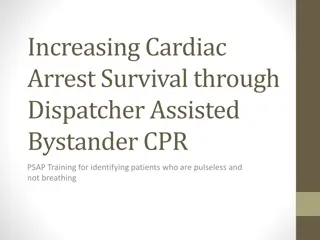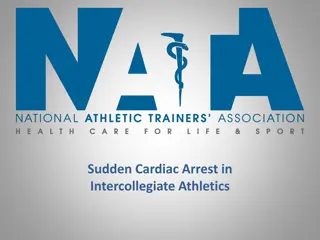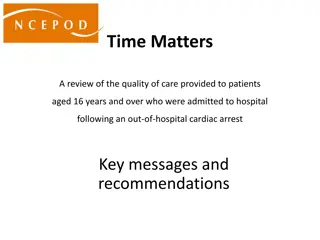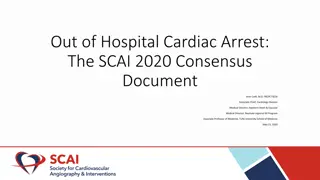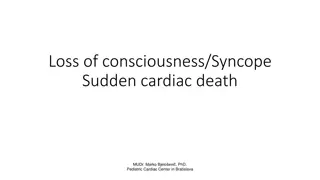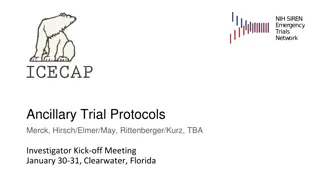Enhancing Cardiac Arrest Survival Through Dispatcher-Assisted Bystander CPR
This presentation emphasizes the importance of dispatcher-assisted bystander CPR in identifying pulseless, non-breathing patients to improve cardiac arrest survival rates. Highlighting the need for community involvement, it showcases the impact of prompt response and effective CPR on increasing survival rates. The content covers the signs of cardiac arrest, how to identify it, the significance of assessing breathing status, and understanding agonal breathing. Real-life scenarios and statistics are utilized to underscore the urgency of proper CPR intervention.
Download Presentation

Please find below an Image/Link to download the presentation.
The content on the website is provided AS IS for your information and personal use only. It may not be sold, licensed, or shared on other websites without obtaining consent from the author.If you encounter any issues during the download, it is possible that the publisher has removed the file from their server.
You are allowed to download the files provided on this website for personal or commercial use, subject to the condition that they are used lawfully. All files are the property of their respective owners.
The content on the website is provided AS IS for your information and personal use only. It may not be sold, licensed, or shared on other websites without obtaining consent from the author.
E N D
Presentation Transcript
Increasing Cardiac Arrest Survival through Dispatcher Assisted Bystander CPR PSAP Review for identifying patients who are pulseless and not breathing
Training Review Identifying patients who need dispatcher CPR
Why are we doing this? Each year 800 people have an out-of-hospital cardiac arrest in Milwaukee County and 90% die Less than 19% have the benefit of bystander CPR Bringing dispatcher assisted CPR to your community will CHANGE: Bystander CPR rates Cardiac arrest survival rates
Whats happened so far? CALL TRANSFERS AS OF MARCH 8, 2016 Calls Transferred to Communication Center 92 Victims Identified as Needing Compressions Victims Who Received Bystander Compressions Victims Who Survived to the Emergency Department Victims Who Survived to Hospital Discharge 23 6 (26%) 3 (data incomplete) 1 (data incomplete)
Cardiac Arrest Signs Sudden, unexpected collapse Unconsciousness, no sign of life Abnormal breathing (gasping) common Brief seizure lack of oxygen to brain
Identifying Cardiac Arrest Is the patient awake? Is the patient breathing normally? No No Go
Why ask Breathing Normally? Time since Called Dispatcher Question Caller Answer On EMS arrival patient pulseless with agonal breathing 0:11 What s happening there? My daughter [ ] so now she is absolutely passed out. I can t get her to sit up or anything. 0:21 Is she breathing? Yes, she is breathing, but very slightly. Her neck is very warm. 1:15 But she s breathing? She s breathing and moaning, yes. 1:35 Alright. But she is breathing, though? She s breathing, but with a heavy breathing. 3:09 Is she breathing? Yes, she is, but then she makes this moan and then she closes her eyes again. 4:29 Make sure she s still breathing. She s still breathing, but she s not opening her eyes at all. 4:57 Is her breathing normal? No.
Agonal Breathing Slow, passive & ineffective breathing. Cause cerebral ischemia, due to extreme hypoxia Caller often mistakes as breathing Words used by callers when there is agonal breathing: Gasping Snoring Snorting Sighing Gurgling Puffing Light Labored Shallow
Review of Script Is the patient awake? Yes: Respond as usual (see appropriate chief complaint) No: Go to Step 2 Unsure: Try to wake them up while I wait on the line Is the patient breathing normally? Yes: Respond as usual (see appropriate chief complaint) No: Dispatch ALS/BLS; Transfer to MC EMS Communicator Unknown: Go to Step 3
Remember Studies have shown giving CPR to a person not in cardiac arrest does minimal harm Not giving CPR when someone is in arrest significantly decreases survival Decreasing TIME To CPR is Key! Use the script!
